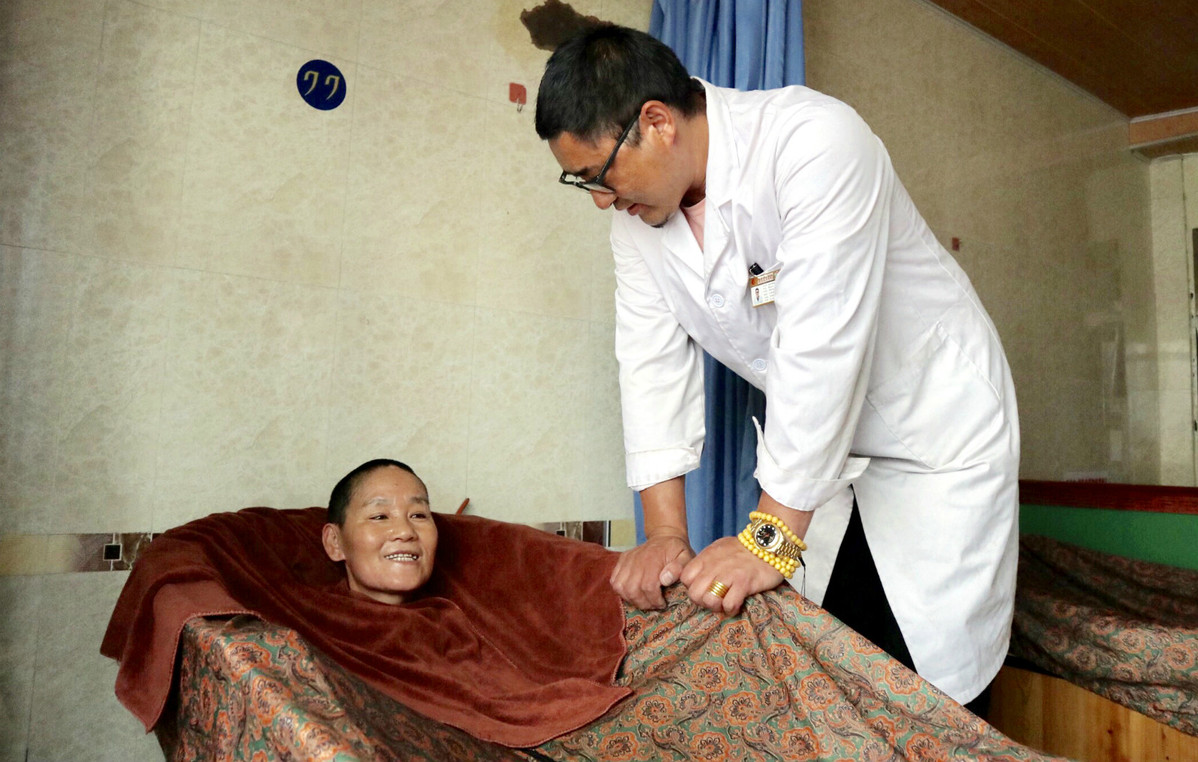Bathed in Tibetan tradition: Many say therapy cures what ails them
By Palden Nyima and Daqiong in Lhasa | China Daily | Updated: 2019-08-19 09:03

In the Tibet autonomous region, 34-year-old Lhamo Tsering, a resident of Lhasa, was suffering. It was 2014, and she had just given birth. Painful, numbing arthritis followed, affecting her entire body.
The pain was unrelenting - legs, arms, hands, eyes, face, joints, scalp and even her fingernails. She had difficulty with daily needs, such as using the bathroom.
"Except for my hair, every part of me was in pain," she said. "Even a gentle breeze could bring it on and was a source of dread. I was afraid of touching cold things such as steel, water, glass or even a thermos bottle. I feared I would become paralyzed or die. None of the Chinese or Western medicine had worked."
She became reclusive to stave off the pain.
"I shut myself in a room for months. I couldn't go out, and I missed eating the spicy foods that I was advised to avoid," she said.
Then came the miracle - an ancient therapy. Or, if it wasn't exactly a miracle, it at least provided her with relief.
Lhamo Tsering turned to a Tibetan medical treatment known as lum, basically a series of hot baths in a tub filled with an herbal soup. This therapeutic soup is customized according to ancient recipes to meet the needs of each patient, selecting from a list of more than 100 herbs that are said to have medicinal properties.
Lum bathing was recognized as an intangible cultural heritage by UNESCO in November. The therapy is one of the four main physical therapies written in the Gyud phyi - four Tibetan medical tantras - a classic of medical instruction compiled in the eighth century. According to legend, the treatment had been passed down informally for millennia before that. Testimonials to its effectiveness are abundant.
A typical treatment regimen consists of two baths every day for seven days in which the water temperature increases gradually from about 37 C on the first day to about 42 C after three to four days. The temperature is then gradually taken down to the beginning level by the end of the treatment. Severe symptoms may require 14-or even 21-day courses. Each session typically lasts 45 minutes to one hour.
Tashi Tsering, 53, head of the Institute of Tibetan Medicine and Astrology in Lhokha, said lum bathing therapy had a good curative record for conditions ranging from rheumatoid arthritis, lumbar disc hernias and other lower back problems to paralysis and skin diseases.
Of course, there are no guarantees. Traditional therapies, including lum bathing, are typically based on concepts of overall wellness, rather than attacks on a particular condition or pathogen with drugs or other interventions, as with Western medicine. They're as much about prevention as they are about cures.
One result of that approach is that it's difficult to nail down the relationship between traditional treatments and specific outcomes. Faith may be in play as much as science.
But for people like Lhamo Tsering, there is no doubt. "I had three lum bathing treatments, and I recovered," she said. "I didn't need to spend a lot of money."























